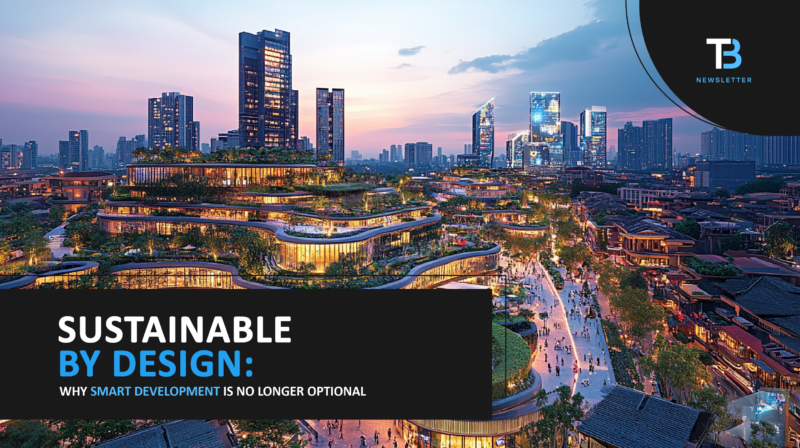
Introduction: Why Sustainability Can No Longer Be Optional
Sustainability is no longer a value-add. It’s a strategic imperative.
In commercial real estate, the built environment has always mirrored our priorities. Today, those priorities are shifting. Environmental impact, operational efficiency, and long-term viability are top of mind for investors, tenants, and regulators alike.
At Layer 10, we believe technology is the key to bridging the gap between aspiration and execution. From smarter energy systems to data-driven operations, the tools are here.
The real question is: are you using them?
The High Cost of Business-as-Usual
Relying on outdated construction and building management practices isn’t just environmentally irresponsible—it’s expensive.
Every inefficiency in a building’s lifecycle is a drain on your bottom line:
• Energy waste
• Water overuse
• Reactive maintenance
These are symptoms of a system that wasn’t designed for adaptability. And in a competitive market, they add up fast.
Worse yet, they put your asset at a disadvantage.
Because today’s tenants—and tomorrow’s investors—are looking for more.
Smarter Buildings Start with Smarter Design
This is where technology steps in. When integrated early and thoughtfully, technology empowers sustainability rather than complicating it. The key lies in a process built on:
• Design-first thinking: Tech isn’t an afterthought; it shapes the experience from the start.
• Human-centric solutions: Technology that supports comfort, wellness, and productivity.
• Product-agnostic flexibility: Choosing the right tools for the job, not the vendor.
From connected HVAC systems to smart water usage, technology enables building owners to monitor, measure, and optimize resource use in real time.
Real-World Example: The Edge, Amsterdam
Often cited as the world’s most sustainable office building, The Edge showcases the potential of smart building design:
• 30,000+ sensors track light, temperature, occupancy, and more.
• Solar panels provide the majority of the building’s power.
• Smart water management reclaims and reuses resources.
• User-friendly mobile app allows occupants to personalize their workspace environment.
The result?
• 70% less energy consumption than comparable buildings.
• Lower operational and maintenance costs.
• A radically improved tenant experience.
It’s Not About Being Trendy. It’s About Being Ready.
There’s a lot of hype around smart buildings. But for us, it’s not about bells and whistles. It’s about:
• Making data actionable
• Lowering lifecycle costs
• Creating healthy, resilient spaces
This isn’t the future. It’s the present.
And the developers and property owners who invest in sustainability today are the ones who will lead tomorrow.
The Layer 10 Difference
At Layer 10, our approach is simple but powerful:
• Design-first: Tech strategy starts in the earliest design conversations.
• Human-centric: People—not platforms—are the focus.
• Product-agnostic: We don’t sell gear; we deliver outcomes.
We help clients integrate the right technologies to reduce energy use, extend system life, and create buildings that are both responsive and responsible.
When done right, sustainability isn’t just about checking a box. It becomes a driver of performance, experience, and brand value.
Let’s Build Something That Lasts
If you’re still thinking of sustainability as a luxury or a marketing angle, it’s time to rethink the equation.
The most valuable buildings of the next decade won’t just look smart. They’ll be smart.
They’ll use less, last longer, and work harder for the people who occupy them.
If that sounds like something you want to be part of, we should talk.
Let’s build tomorrow, today.
Additional Resources:
• Explore the Layer 10 Approach